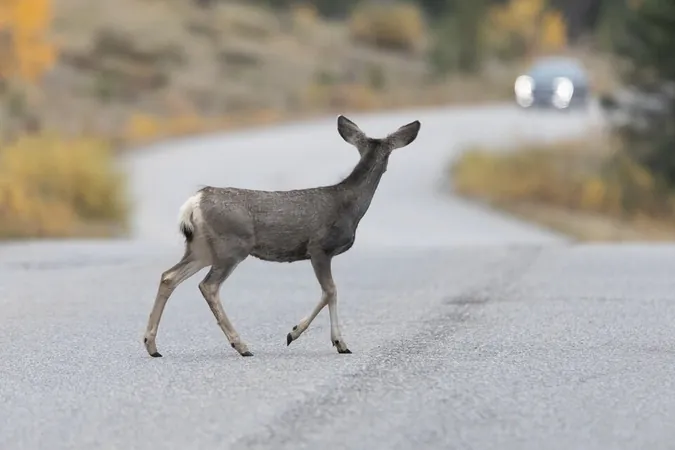
New Gene Mapping Tool to Combat Chronic Wasting Disease in B.C. Deer: Are We Facing a Crisis?
2024-10-08
Author: Sophie
Introduction
In a groundbreaking initiative, scientists in British Columbia have embarked on a two-year project to combat chronic wasting disease (CWD), ominously dubbed "zombie deer disease." This innovative research will utilize a genomic map to track the movements and interactions of deer across the province, providing critical insight into how the disease spreads.
Funding and Methodology
Funded by Genome BC, the project harnesses samples collected from local hunters, First Nations communities, and trappers, creating a robust dataset that has never been utilized in this way in Canada. David Charest, director of Research and Innovation at Genome BC, highlights the significance of this undertaking as a pioneering attempt to analyze animal population structures for understanding disease transmission.
Current Situation of CWD in B.C.
CWD was first detected in January 2024 in mule and white-tailed deer in the Kootenay region. Since then, targeted sampling has thankfully not revealed any additional cases, a bit of good news considering how rapidly the disease can spread via highly infectious prions—abnormal proteins that accumulate in the bodies of infected animals. These prions can be excreted into the environment through the urine and feces of affected deer, where they can persist for years, endangering not just deer but also other wildlife like elk, moose, and caribou.
Symptoms and Urgency
Symptoms of CWD emerge within 18 months of infection, including severe weight loss, drooling, and poor coordination, ultimately leading to death in all infected cases. Kaylee Byers, an assistant professor at Simon Fraser University and the project leader, emphasizes the urgency of the situation: "This disease is incredibly hard to control, but it seems like we caught this early."
Importance of Genomic Mapping
Byers explains that the genomic mapping will provide a detailed view of deer movement patterns, which is crucial for crafting effective containment strategies. For instance, if genetic testing indicates that deer typically do not cross certain rivers, a positive CWD result in a deer on one side would prompt actions directed solely at that population.
Potential Consequences
The stakes are high. CWD has already infiltrated 25 U.S. states and three Canadian provinces since its emergence in the 1960s, and a widespread outbreak in B.C. could have dire repercussions on the local ecosystems and wildlife populations that depend on deer.
Ecosystem Disruption
The ripple effects of CWD are concerning. Byers warns that a widespread infection could devastate predator populations and disrupt the delicate balance of the ecosystems that rely on healthy deer populations. "We don’t fully know the implications, and we don’t want to find out," she cautions.
Human Health Concerns
Remarkably, while primates such as squirrel monkeys have shown susceptibility to CWD, there has yet to be a confirmed case in humans. Nevertheless, Byers remains vigilant, noting that the absence of evidence does not equate to safety. If humans are ever found to be susceptible, it could result in disease manifestation resembling past prion-related crises, such as mad cow disease. "We just don’t have a baseline," she states, underscoring the need for continued vigilance and research.
Conclusion
As Scotland's famed Loch Ness Monster stirs curiosity and debate, could the real creatures to watch out for be the deer in our backyards? With CWD lurking, the urgency for awareness and preventive action has never been greater for both wildlife and human health.









 Brasil (PT)
Brasil (PT)
 Canada (EN)
Canada (EN)
 Chile (ES)
Chile (ES)
 España (ES)
España (ES)
 France (FR)
France (FR)
 Hong Kong (EN)
Hong Kong (EN)
 Italia (IT)
Italia (IT)
 日本 (JA)
日本 (JA)
 Magyarország (HU)
Magyarország (HU)
 Norge (NO)
Norge (NO)
 Polska (PL)
Polska (PL)
 Schweiz (DE)
Schweiz (DE)
 Singapore (EN)
Singapore (EN)
 Sverige (SV)
Sverige (SV)
 Suomi (FI)
Suomi (FI)
 Türkiye (TR)
Türkiye (TR)